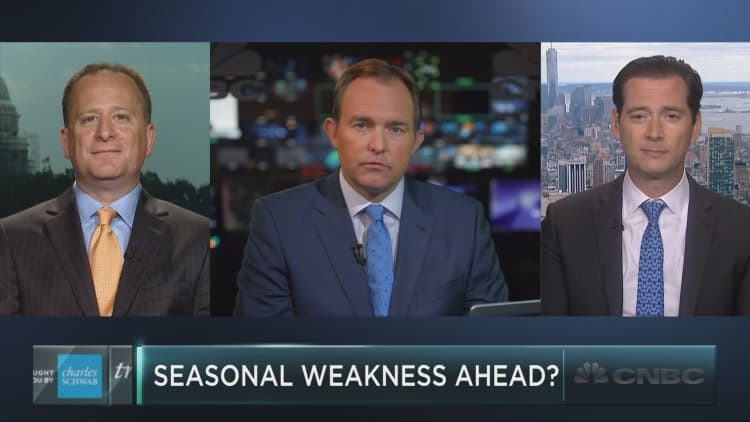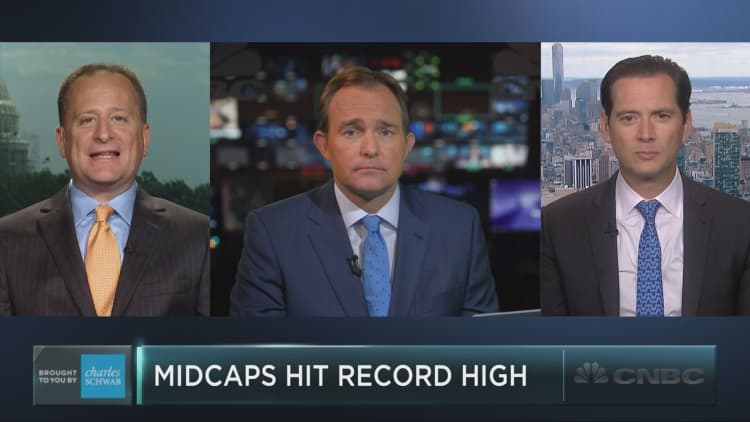


The worst period of the year for stocks has just begun — at least based on market history.
Over the entire 120-year history of the Dow Jones industrial average, Sept. 6 to Oct. 29 tends to be the worst period for the market. And more specifically, the last few weeks of September have been an especially bad time.
To generate this interesting insight, Eddy Elfenbein of the Crossing Wall Street blog took the entire super-long-term performance of the Dow, and created an average year, indexed to 100. Since stocks tend to rise, the index's price at the end of its average year is 107.29.
Along the way, however, there are some disturbances, the most dramatic of which comes in September. From Sept. 6 to Sept. 30, the historical index price falls from 106.56 to 104.31, for a 2.1 percent decline.
"It's interesting, but I wouldn't make any specific investment decisions" based on this analysis, Elfenbein said Tuesday on CNBC's "Trading Nation."
A 2 percent loss is "not a very big movement," he explained. "That would only take a couple of days right now."
But Rich Ross, head of technical analysis at Evercore ISI, wouldn't toss the insight aside quite so quickly.
"If ever there was a time for seasonality to work, it's this time," Ross said Tuesday on "Trading Nation."
He points out that stocks in the U.S. and around the world are at record highs and high-yield spreads are at long-term lows — while highly anticipated events are around the corner, in the form of the September Fed meeting and the presidential election in November.
"When we take that in conjunction with the seasonality, I do think we have the backdrop for, at minimum, a pullback," Ross said.






